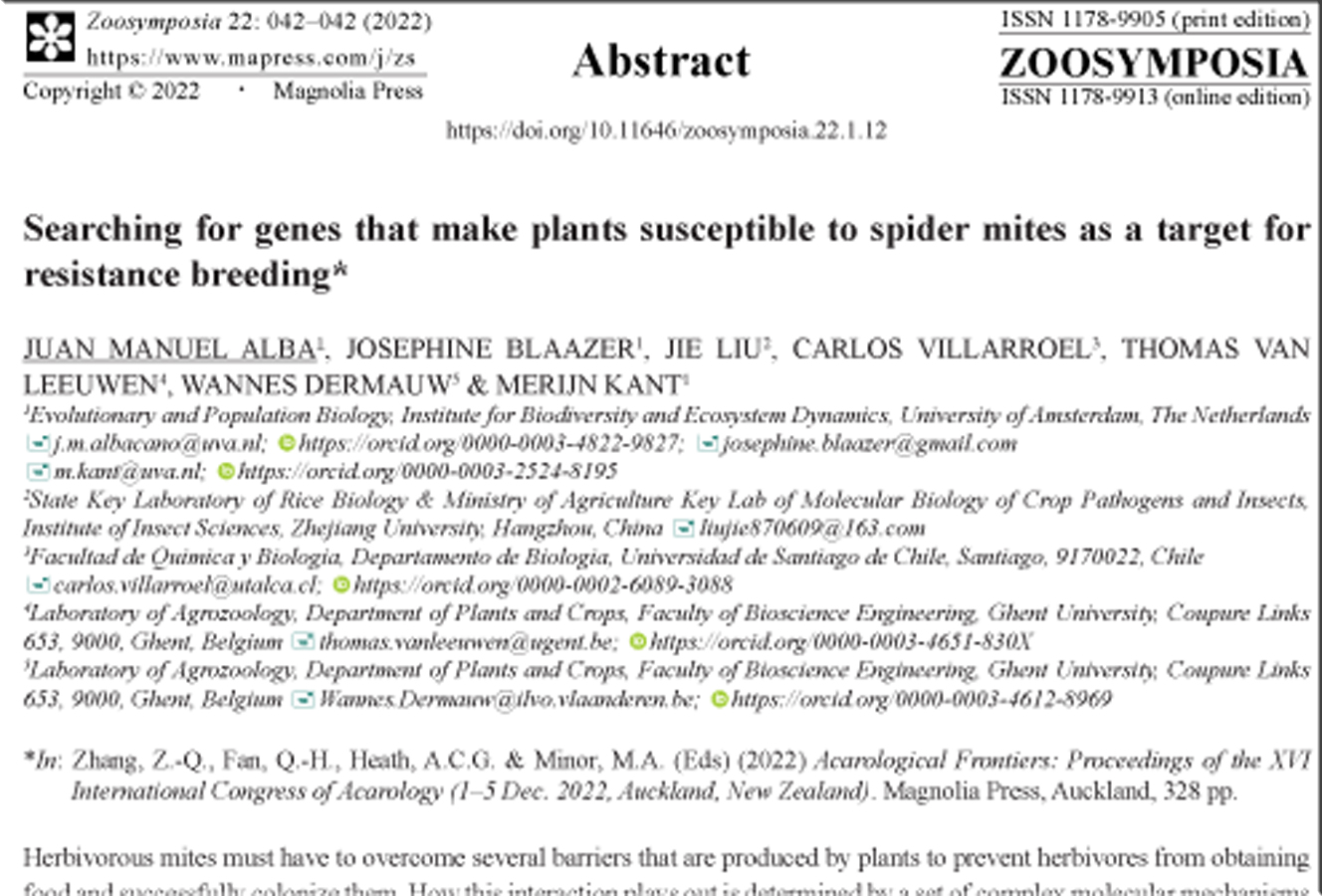Abstract
Herbivorous mites must have to overcome several barriers that are produced by plants to prevent herbivores from obtaining food and successfully colonize them. How this interaction plays out is determined by a set of complex molecular mechanisms that trigger physiological changes in plants to deter mites, and in mites to withstand deterrence and together these determine their degree of compatibility. We demonstrated that spider mites secrete specialized salivary proteins into plants that suppress plant defenses and therefore play a decisive role in the plant-mite interaction. To these proteins we refer as effectors (Villarroel et al. 2016; Jonckheere et al. 2016). Elucidating how effectors suppress plant defenses can aid plant resistance breeding and help to better understand plant-herbivore co-evolution.
References
Jonckheere, W., Dermauw, W., Zhurov, V., Wybouw, N., Van den Bulcke, J., Villarroel, C.A., Greenhalgh, R., Grbić, M., Schuurink, R.C., Tirry L., Baggerman, G., Clark, R.M., Kant, M. R., Vanholme, B., Menschaert, G. & Van Leeuwen, T. (2016) The salivary protein repertoire of the polyphagous spider mite Tetranychus urticae: A Quest for Effectors. Molecular & Cellular Proteomics, 15, 3594–3613. https://doi.org:10.1074/mcp.M116.058081
Jonckheere, W., Dermauw, W., Khalighi, M., Pavlidi, N., Reubens, W., Baggerman, G., Tirry, L., Menschaert, G., Kant, M.R., Vanholme, B. & Van Leeuwen, T. (2018) A gene family coding for salivary proteins (SHOT) of the polyphagous spider mite Tetranychus urticae exhibits fast host-dependent transcriptional plasticity. Molecular Plant-Microbe Interactions, 31, 112–124. https://doi.org:10.1094/mpmi-06-17-0139-r
Villarroel, C.A., Jonckheere, W., Alba, J.M., Glas, J.J., Dermauw, W., Haring, M.A., Van Leeuwen, T., Schuurink, R.C. & Kant, M.R. (2016) Salivary proteins of spider mites suppress defenses in Nicotiana benthamiana and promote mite reproduction. The Plant Journal, 86, 119–131. https://doi.org:10.1111/tpj.13152


